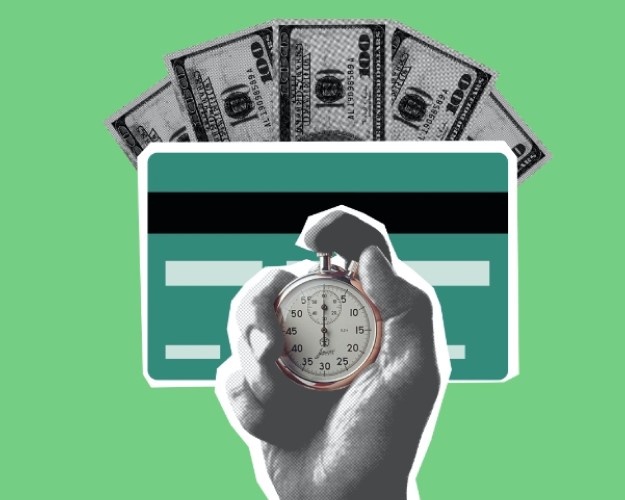The best time to consider getting a business loan is well before you need it. Here are some factors to consider before you apply for a business loan.

When is the Best Time to Obtain a Business Loan?
Most small businesses on a growth trajectory reach a critical juncture when they need an injection of capital to stabilize operations, take advantage of new opportunities, or create more cash flow flexibility. If outside investors are not available or desired, the most reliable source of capital is a business loan. But for many small businesses, the critical question is not why they need a business loan but when the best time is to pursue one.
Getting a business loan at the wrong time can work against a business’s growth plans. In addition to jeopardizing its finances by taking on more debt than it can handle, it can hurt its credit, making it difficult to secure future financing at a reasonable cost.
The best time to obtain a business loan can vary depending on specific circumstances and needs. Before exposing their business to possible financial risks, small business owners should consider thoroughly evaluating their business needs in light of several key factors that can influence the timing of obtaining a business loan.
Financial Condition
A business that hopes to grow through financing must first determine if it has the capacity to carry debt over the term of a loan, with realistic expectations of paying it off. Several vital metrics can tell you and a lender if you have that capacity, including:
Debt service coverage ratio (DSCR): Your DSCR measures whether your business can afford a loan. It measures how much cash your business has to pay current debt obligations. A score below one means you don’t have enough cash to pay your debt in full.
Trailing 12-month sales and revenue: Are your sales and revenue numbers stable as compared to the past 12 months?
12-month sales forecast: Will projected sales and revenues be sufficient to generate enough cash flow to make debt payments on top of operational expenses?
Cash flow forecast: Based on current and forecasted numbers, will the business have enough flexibility and consistency with its cash flow?
Credit score: Is your and your business’s credit score sufficient to secure favorable loan terms?
Long-term Goals vs. Operational Needs
Obtaining financing to expand operations or capitalize on a growth opportunity may look like a good idea on paper. However, if your business doesn’t have the resources to manage that growth, it could have the opposite effect. A well-conceived business plan (a must-have requirement for lenders) should map out in detail how the loan proceeds will be used and how your business expects to manage the growth.
For example, what resources, including additional staff and equipment, will be necessary to absorb the increased workload? Is the right management structure in place to manage the growth? Clearly understanding your operational needs as you move forward with your growth plans is essential to optimizing the value of bank financing.
Economic Conditions
You also must consider whether taking on debt in the current economic environment makes sense. The economy has an impact on the availability and cost of business loans. During times of economic uncertainty, lenders may tighten their lending standards or offer loans at higher interest rates. However, if the benefit to your bottom line outweighs the higher interest costs, it can still be a good time to borrow.
When is the Worst Time to Borrow?
It will take a clear understanding of these factors to determine the right time to borrow based on your specific circumstances. But there is an absolute worst time to borrow for any business: when they urgently need capital. In business, the best time to borrow money is well before you need it, with a strategic plan in place and the time to ensure the conditions are right.
To have the best chance of securing favorable loan terms from a reputable lender, it’s essential to have a clear understanding of your business needs, do your research, compare loan options, and have a solid plan for using the funds before applying for a loan.
Recent articles:

Building Strategic Partnerships for Small Business Success - Strategic partnerships amplify reach, reduce risk, and accelerate growth—proving small businesses go further, faster when they build together.

Embracing Micro-Influencer Marketing for Small Businesses - Micro-influencers give small businesses authentic reach, higher engagement, and real sales—proving that trust, not size, drives modern marketing.

Using Financial Software to Streamline Small Business Bookkeeping - Automating your bookkeeping saves time, reduces errors, and gives you real-time insights—so you can focus on growth, not data entry.

Using Data Analytics to Drive Small Business Decisions - Data analytics empowers small businesses to make smarter decisions, cut costs, improve marketing, and stay competitive in today’s fast-paced market.

The Rise of Hybrid Work Models for Small Businesses - Hybrid work helps small businesses attract talent, save costs, and stay competitive, making flexibility a key driver of growth in 2025 and beyond.

Financial Planning for Seasonal Businesses - Seasonal businesses can thrive year-round by mastering cash flow, budgeting, and tax planning, turning challenges into lasting growth and stability.
Previous Articles:
- Crafting a Realistic Cash Flow Forecast for 2025: A Guide for Small Businesses
- Elevate Your Business with Flexible Payment Options for Customers
- Understanding and Optimizing Your Business Credit Score
- The ROI of Automation: Affordable Tech Solutions for Small Business Growth
- High-Impact, Low-Cost Marketing Ideas for Small Businesses
- The Small Business Owner’s Guide to Managing Stress and Avoiding Burnout
- With Credit Tightening, How Small Businesses Can Build a Strong Financial Profile
- Post-COVID Trends That Small Businesses Can’t Afford to Ignore
- Standing Out in a Saturated Market: Tips for Small Business Differentiation
- Tightening the Belt: 10 Cost-Cutting Strategies for Small Businesses Facing Rising Expenses
- Five Steps Small Businesses Can Take to Increase Web Traffic
- Retention 101: Keeping Your Best Employees in a Competitive Market
- Creative Ways to Overcome Labor Shortages in Your Industry
- Preparing Your Business for the Next Recession: Actionable Tips
- 2025 Tax Updates for Small Businesses: What You Need to Know
- Email Marketing Mistakes Businesses Must Avoid
- Why Community Engagement is Crucial for Small Businesses
- Adapting to E-commerce: A Guide for Brick-and-Mortar Stores
- Harnessing the Power of Customer Reviews to Boost Your Business
- Small Business Owners Need an Integrated Approach to Post-Pandemic Financial Planning
- How to Build a Strong Brand Identity on a Budget
- The Future of Remote Work: Tips for Small Businesses to Thrive
- Navigating the Gig Economy: Opportunities and Challenges for Small Businesses
- Sustainable Business Practices: How Small Businesses Can Make a Big Impact
- 10 Essential Free Tools for Small Businesses
- 7 Ways Small Businesses Can Benefit from AI and Automation
- How to Leverage Social Media for Your Small Business in 2024
- The AI Advantage: How Small Businesses Can Thrive in the Age of Intelligence
- Shielding Your Business: Essential Insurance for Risk Management
- How Outsourcing Can Help Your Small Business Grow
- Securing Your Data: A Cloud Security Checklist for Small Businesses
- Mastering Cash Flow: How Banks Empower Small Businesses with Cash Management Tools
- Optimizing Productivity for a Remote Workforce
- Digital Strategies: The Engine of a Virtual Distribution Strategy
- Attracting and Engaging Gen Z: The Future of Your Workforce
- Managing Cash Flow for Business Prosperity
- How to Position Your Bank as a Trusted Advisor for Small Businesses—And Why It Matters
- Business Owners Need a Complete Risk Management Plan
- Preparing Your Business to Borrow
- Is Your Business Prepared for Generation Z?
- Small Business Trends You Don’t Want to Miss in 2024
- Ideas on How to Improve the Customer Experience
- Do You Use Website Analytics to Learn About Your Customers’ Interests?
- 5 Strategies to Incorporate into Your Business for 2024
- The Benefits of Mobile Banking and Remote Deposit Capture
- Should You Have a Blog on Your Website?
- Best Practices for Protecting My Business Online
- Using ACH to Improve Cash Flow
- 10 Ideas to Help You Recruit New Talent
- How AI Could Improve Your Business
- Using a Small Business Loan to Expand Your Services
- Local, State, and Federal Resources for Your Business
- Security Essentials for Keeping Business Data Safe
- Leveraging Your Bank’s Cash Management Services to Improve Your Business
- When is the Best Time to Obtain a Business Loan?
- How Much Insurance Do I Need for My Business?
- Incorporating the Latest Merchant Services Technology for Your Business
- A Checklist for Getting Your Small Business Tax Compliant
- How Third-Party Data Can Help Target Marketing
- Is Your Small Business Taking on too Much Debt? Steps to Take to Pay it Down More Quickly
- Leveraging Digital, Direct Mail, and Social Media to Drive Business Customer Acquisition
- Businesses Should Plan Ahead for Year-End Tax Strategies
- Cash Flow Management Tips for Small Businesses
- Recruiting Top-Tier Talent in a Tight Job Market
- Sales or Marketing – Banks Need Both to Grow Revenues
- The Biggest Security Threat to Your Business
- How to Prevent Employee Fraud in Your Business
- There's Still Time to Claim the Employee Retention Credit. What is it, and How to Qualify
- Preparing Your Business to Borrow
- Insurance Essentials for Managing the Many Small Business Risks
- Employers are finding that remote work can be an effective way to increase productivity and lower cost
- Don't Let Your Business be the Next Ransomware Victim
- Taking Advantage of Bank Cash Management Technology
- How to Take Your Digital Marketing to the Next Level
- How Annual Assessments Can Prevent Fraud in Your Business
- How to Position Your Bank as a Trusted Advisor for Small Businesses - And Why it Matters
- Getting to Yes with a Solid Loan Proposal
